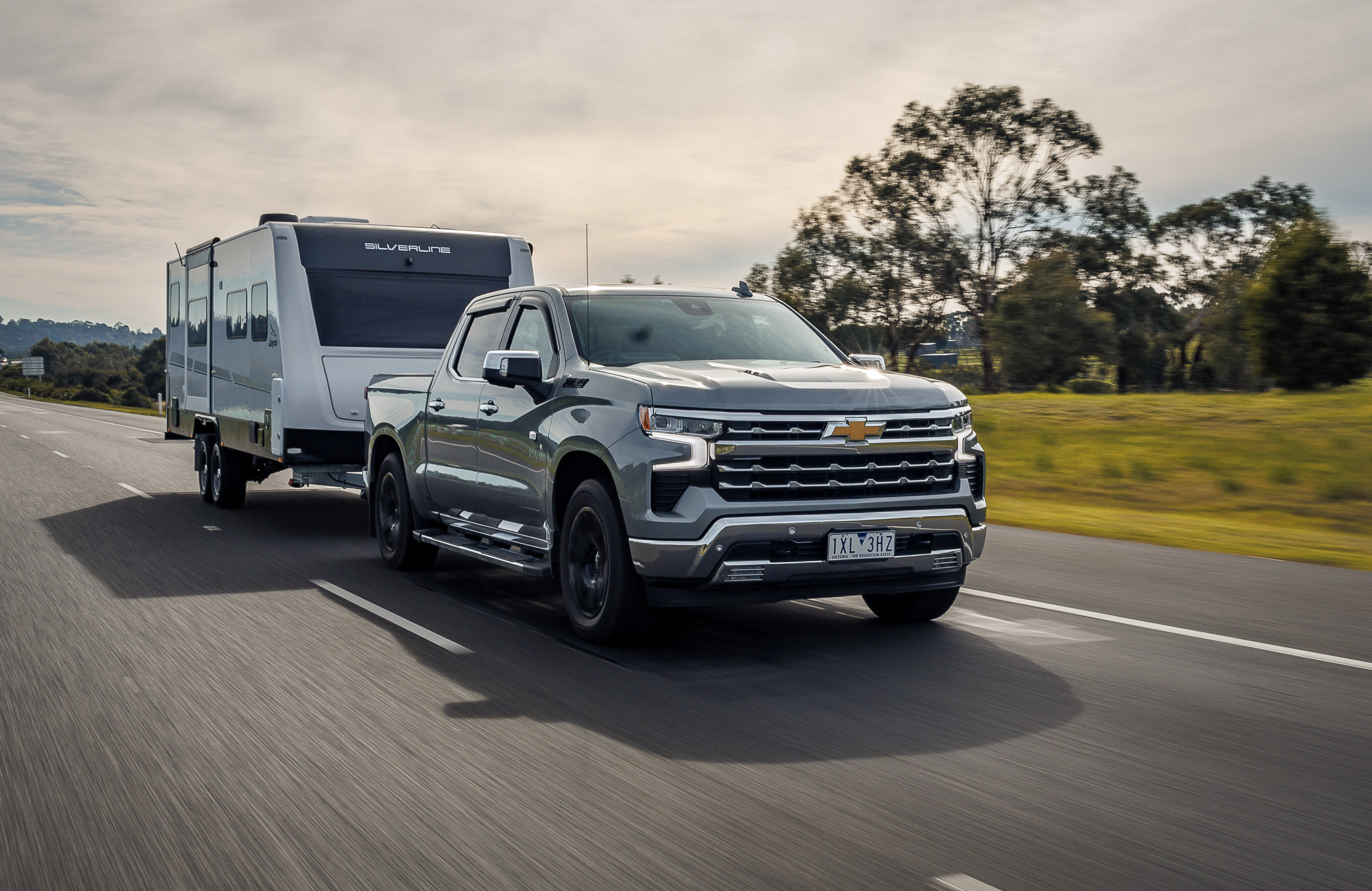
Despite all the advertising material telling you a vehicle can legally tow 3500kg, it doesn’t mean it’s any good at it.
One of the basic things that makes a vehicle tow heavy trailers well is if it is heavy itself, and has a long wheelbase.
That’s where a large US ute comes into play. These are utes that are rated to tow up to 4500kg, so on first blush would seem a shoe-in for the typical 3500kg maximum capacity caravan or even 4500kg maximum trailer boat. As we’ll see though, towing that much mass is still a compromise.
Not many tow vehicles permit a full trailer mass and full payload in or on the tow vehicle at the same time. Read more on this topic here:
Regardless, these utes have taken off in Australia, as buyers realise their metal-for-the-money value and, for some buyers, tax advantages.
These big North American utes have become a successful tradie’s work truck and family hold-all, as well as a solid, heavy basis for towing a heavy trailer. These are definitely not inner-suburb friendly trucks, with each about six metres long, two metres wide - on about four metres of wheelbase.
As you’d imagine, the turning circle of each ute is roughly a football field – well, around 14 metres - but large utes begin to make a lot more sense when their role includes lugging a heavy van or trailer boat.
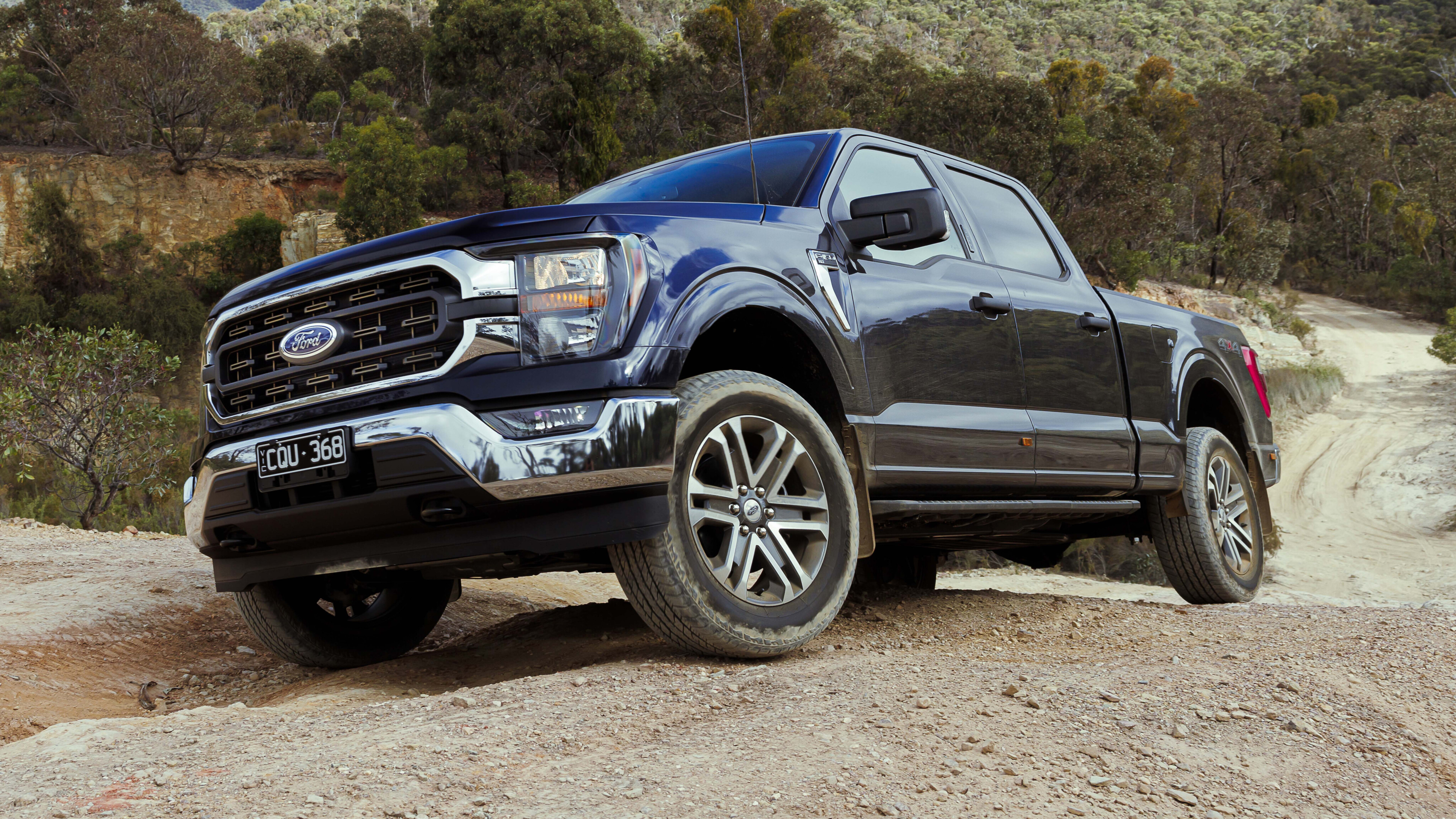
The best thing about these beefy utes is that they each have a relatively high kerb weight, although some are not as much as you might think.
Arguably even better are some of their dimensions making them suitable for towing. Even in short wheelbase form (some are offered in a long-wheelbase version) these utes have acres between their wheelsets.
While not so good for turning circles, reversing a trailer in tight spaces or for sharp urban turns, a lanky wheelbase (and relatively short rear axle-to-towball measurement) goes a long way towards making a rig less prone to yawing or swaying.
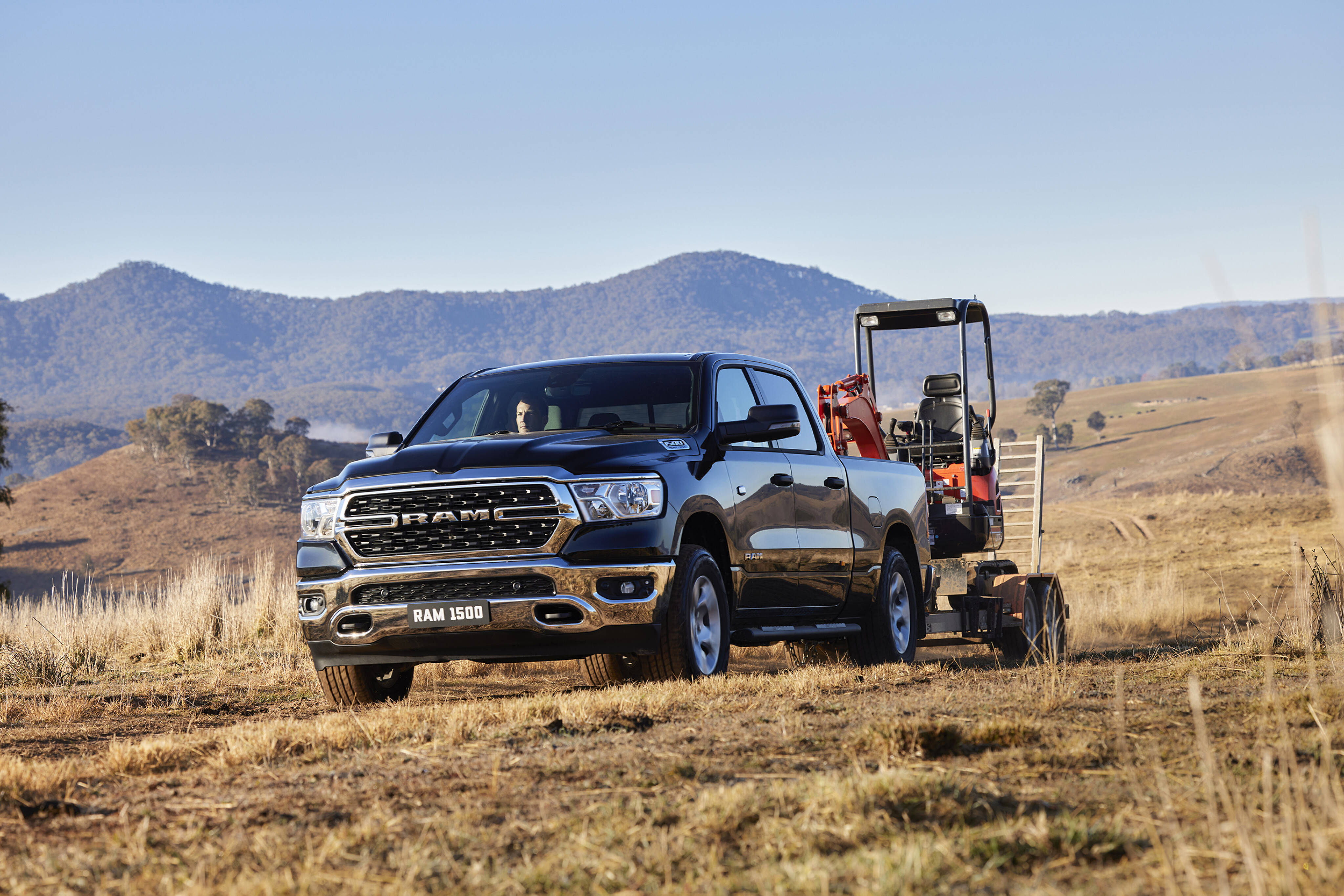
Here we’re rating the officially backed large utes, where towing is the priority.
Even though there are bigger 2500 or 3500 variants of the Chev and RAM, we’re just rating the more popular, less load-capable (but smaller) Chevrolet Silverado, Ford F-150 and RAM 1500 – where a car driver’s licence is all you need. Even though we’ve rated these in order of the best, there is not a lot between these big utes.
We’re expecting the 325kW/790Nm 3.5-litre V6 petrol hybrid Toyota Tundra ute to arrive in early 2025, but it’s not officially on sale yet and we haven’t been able to properly tow test the big Toyota to know where it lands on the page here. It’s worth mentioning that the RAM 1500 will also see a new V6-powered model in 2025.
As a minimum, all these utes have a standard towbar and electric brake controller – they are built for towing in mind. Here’s our pick, in order, of the best large utes for heavy-duty towing.
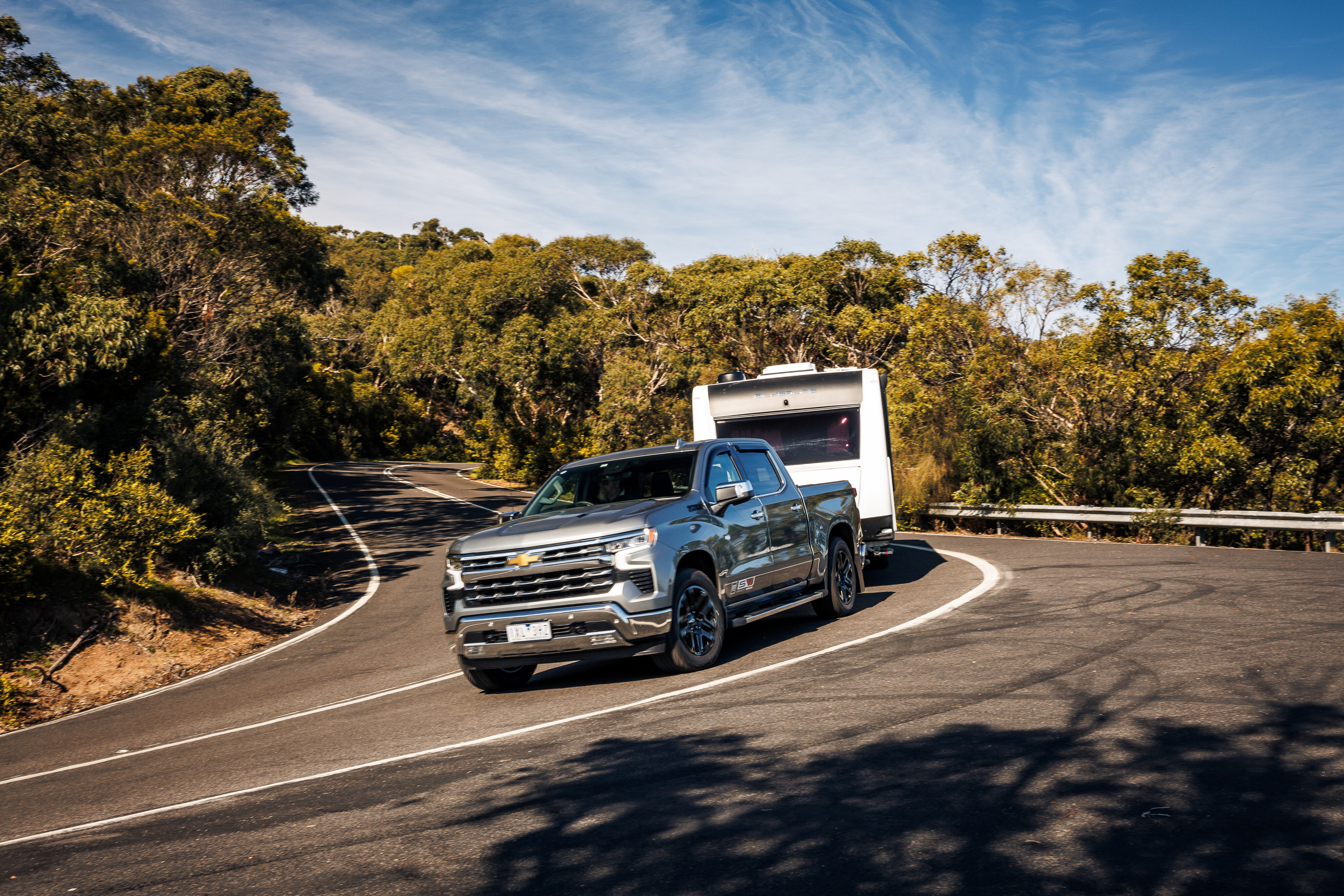
JUMP AHEAD
RAM 1500
The RAM 1500 Big Horn is not the cheapest here with its $119,950 (plus on-road costs) ask, but you get a lot of towing metal for the money.
It has a solid kerb mass (2519kg), with the ‘short’ 1712mm tray (instead of the 1937mm long tray), it has the best payload here (931kg) and with a 3450kg GVM and 7713 GCM, you can theoretically tow 4500kg while having 481kg payload remaining available (assuming 10 per cent tow ball download).
If you’re ‘only’ towing 3500kg, you’ll have up to 581kg to spare as payload (again, assuming 10 per cent of trailer weight is on the tow ball).
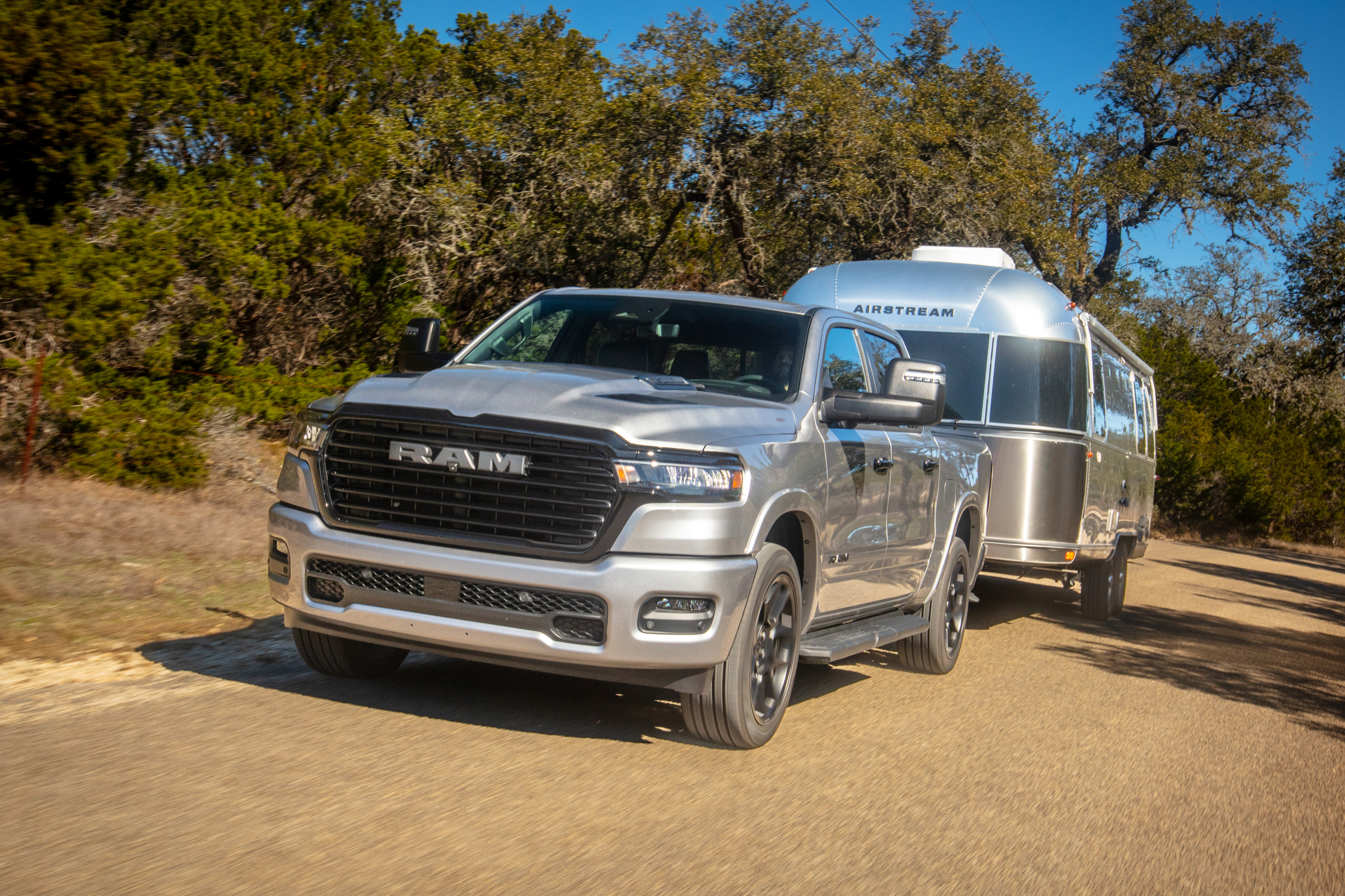
With its 291kW/556Nm engine running through an eight-speed auto and an on-demand 4WD, there’s plenty of grip and get up and go for heavy towing duty.
An 87-litre fuel tank won’t get you too far when towing (where 20L/100km is a realistic fuel figure), but to get the 98-litre capacity offered elsewhere in the RAM 1500 range, you have to spend more but lose some payload.
Towing-assist features are a bit sparse here, compared to the trailer guidance/checks party tricks offered by the others.

Ford F-150
The recently arrived, ‘official’ Ford F-150 is a compelling case, with its lowest entry price ($106,950, plus on-road costs) and largest fuel tank (136 litres) giving it a gun touring range of at least 650km when towing a heavy trailer.
With a 2535kg kerb weight, 794kg payload, 3220kg gross vehicle mass (GVM) and 7720kg gross combined mass (GCM), you can tow up to 4500kg, but have just 235kg remaining for payload. That bounces up to 335kg, if you tow 3500kg with 350kg on the ball.
The Ford has a few towing tricks up its sleeve, with a trailer set-up menu to factor in trailer size for blind-spot warning and a trailer lights check mode. There’s also Pro-Trailer Back-Up Assist that, when set up, you twist a dial on the dash according to the direction you want the trailer to reverse.
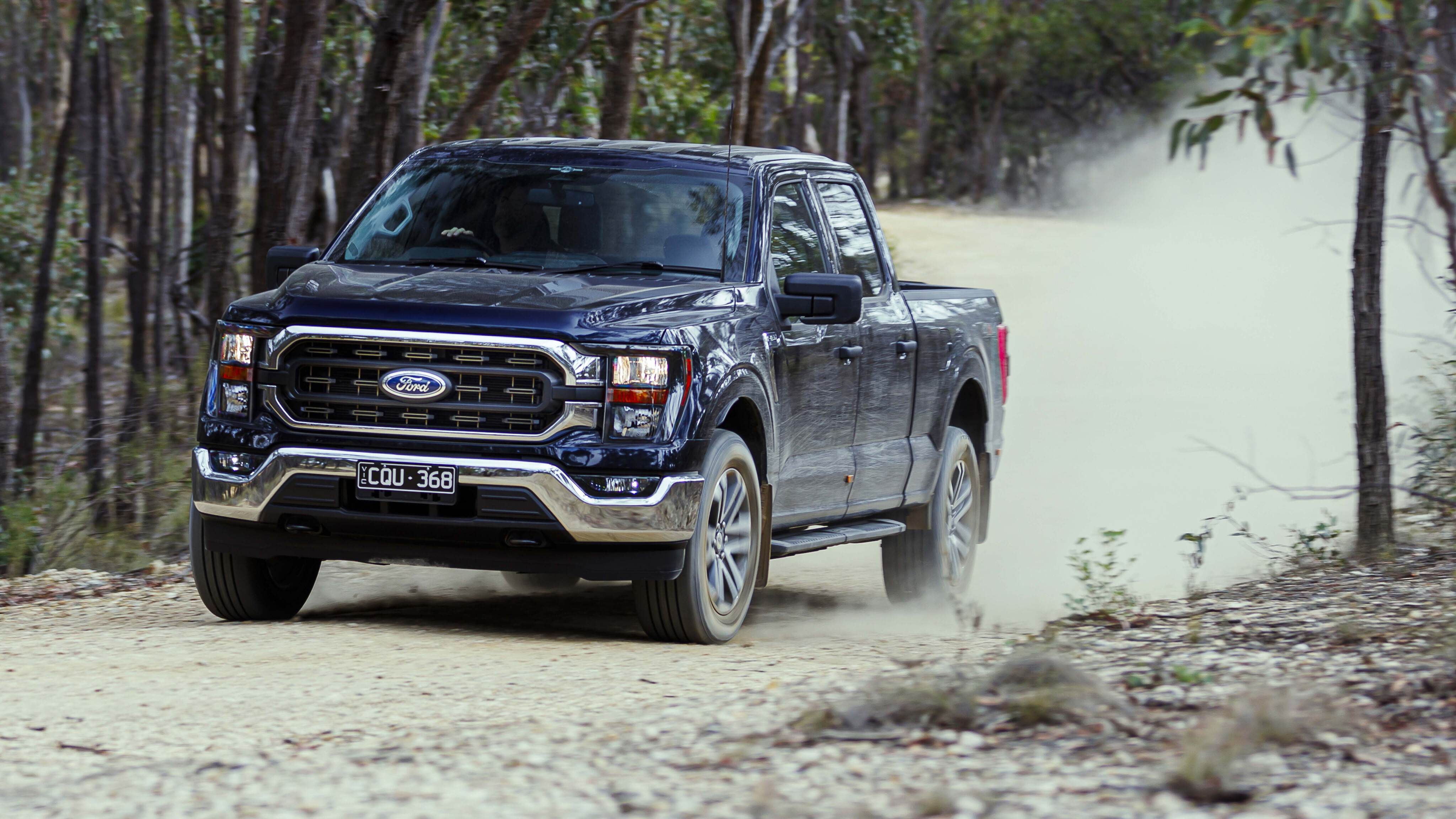
The catch with this great feature is that yaw sensors have to be fitted to the trailer for it to work – not an issue if you tow just one trailer, but it’s not much use if you have more than one trailer you eventually have to tow.
Even though it doesn’t have the V8 bellow of the others here, the F-150’s twin-turbo V6 is a strong engine – it’s down slightly for outright grunt compared to the V8s in the RAM and Chevy but it trumps both for torque – and it pairs well with the 10-speed auto, which shifts through cogs smoothly and decisively.
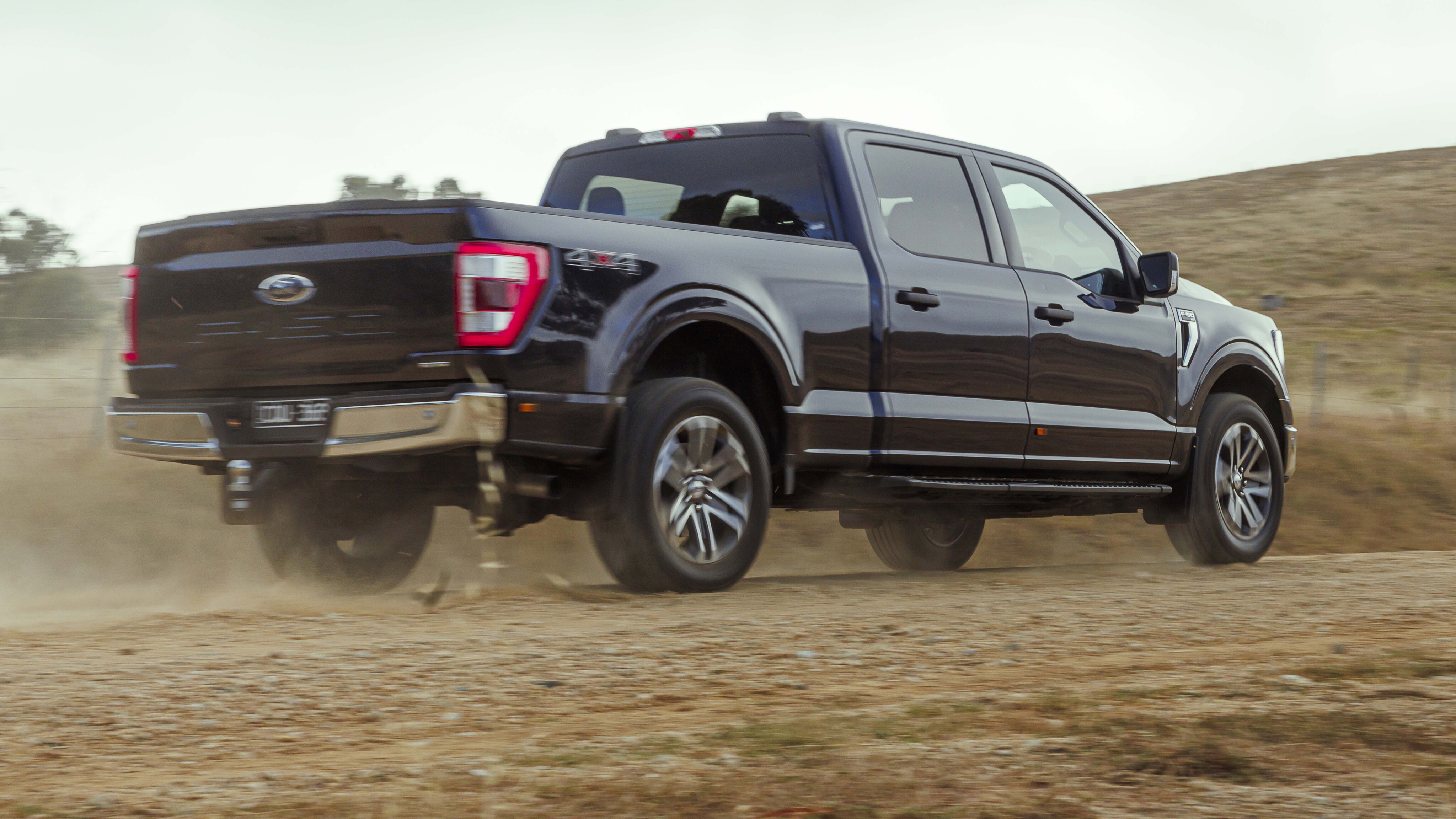
Chevrolet Silverado
The $130,500 (plus on-road costs) Chevrolet Silverado LTZ has a heavy kerb weight and a petrol V8 that churns out 624Nm of torque through a 10-speed auto – all making for a strong argument for tow hauling.
The Chevrolet Silverado LTZ has plenty of power, torque and trailering cleverness, but fuel range on tour is compromised with its 91-litre tank.
Weight are 2543kg kerb mass, 3300kg GVM and 7160kg GCM. That means you have a 757kg claimed payload, that reduces to 117kg when lugging a 4500kg trailer.
While the other two here are restricted in available payload when laden according to their GVM, here it’s a case of a restrictive GCM, capped some 600kg or so less than the other two here.
On the bright side, there’s lots of towing tech. The Silverado has 12 camera views as standard, with optional cameras you can set up to give you a view behind the trailer and in the trailer from the centre infotainment screen. The centre screen displays the full side view down past the rig when you indicate.
The big Chev also has a phone app called Advanced Trailer System. The system includes a pre-departure checklist, light sequencing, maintenance reminders, security alerts and more. The system also offers towing reminders, trailer electrical diagnostics and monitors tyre pressures.

COMMENTS